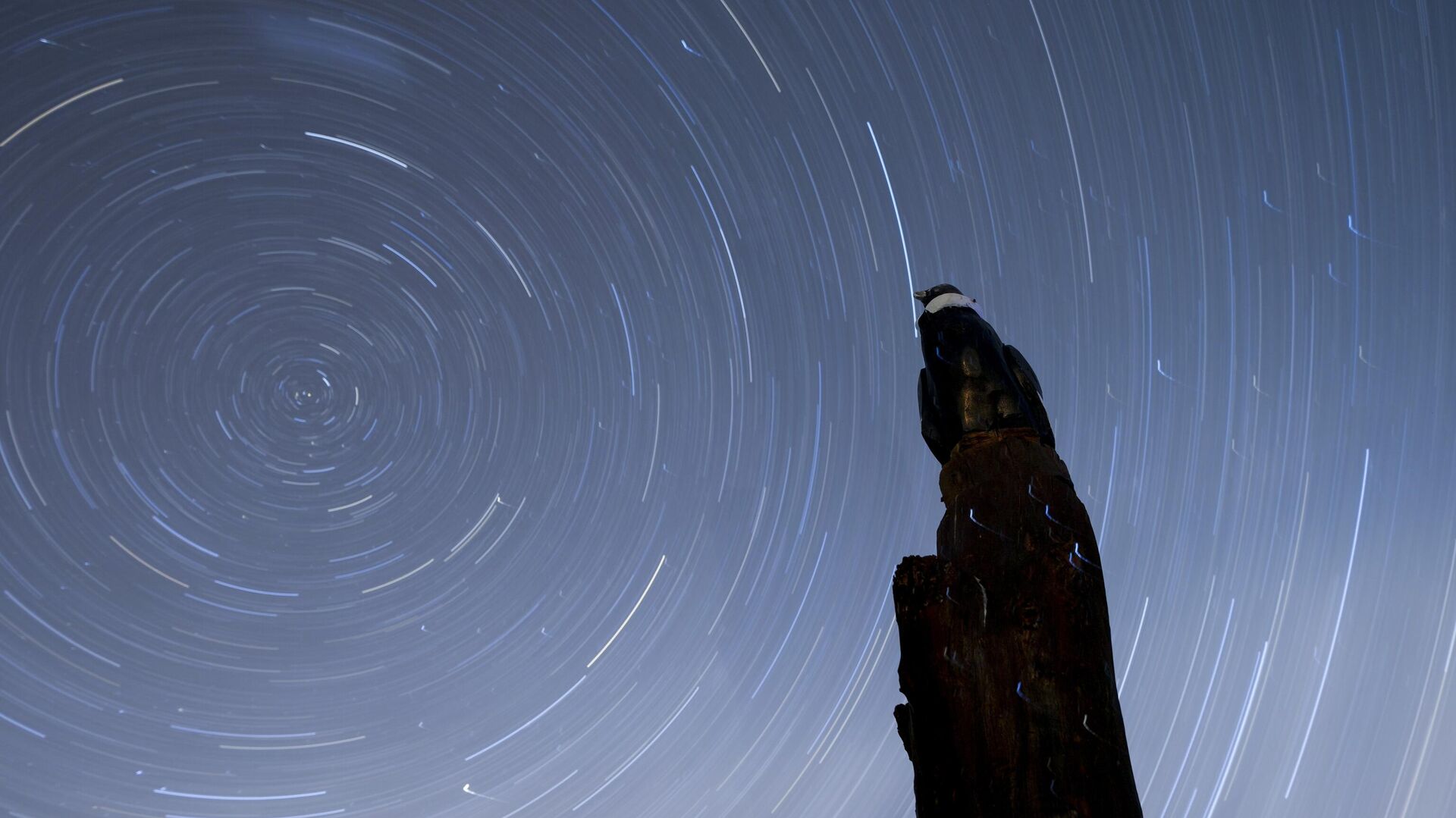https://sputnikglobe.com/20240902/new-study-suggests-nasa-collision-could-create-first-ever-man-made-meteor-shower-1119981783.html
New Study Suggests NASA Collision Could Create First Ever Man-Made Meteor Shower
New Study Suggests NASA Collision Could Create First Ever Man-Made Meteor Shower
Sputnik International
A NASA test in space may result in the first man-made meteor shower that could last for 100 years, a recent report from CNN writes. In late September of 2022, NASA’s Double Asteroid Redirection Test (DART) was directed to strike the small asteroid Dimorphos to test their asteroid deflection technology as a way to protect our planet.
2024-09-02T05:33+0000
2024-09-02T05:33+0000
2024-09-02T05:33+0000
beyond politics
earth
mars
science & tech
nasa
asteroid
asteroid collision
space
space exploration
disaster
https://cdn1.img.sputnikglobe.com/img/07e8/09/02/1119983332_0:22:3071:1749_1920x0_80_0_0_ece397f8ba3565956d42de7633e7530f.jpg
A NASA test in space may result in the first man-made meteor shower that could last for 100 years, a recent report from CNN writes. In late September of 2022, NASA’s Double Asteroid Redirection Test (DART) was directed to strike the small asteroid Dimorphos to test their asteroid deflection technology as a way to protect our planet.After crashing into the asteroid at a speed of about 15,000 miles per hour (24,000 km/h), NASA’s test may have resulted in the creation of what could be the first manmade meteor shower known as Dimorphids, a recent study revealed. The crash resulted in more than 2 million pounds (close to 1 million kilograms) of rocks and dust, and now scientists are trying to predict where that debris could end up.While the meteor that NASA fired on did not pose a danger to Earth, it offered perfect target practice for the administration to see whether or not a kinetic impact could change the motion of a celestial object which poses a threat to Earth.LICIACube, a small satellite which was used to capture the impact made between DART and Dimorphos, was used to capture footage of the collision and the debris that was produced afterwards. Using that data, researchers found that if debris was ejected from the asteroid at speeds of 1,118 miles per hour (500 meters per second) then some fragments could reach Mars while other, smaller and faster moving debris could reach Earth traveling at 3,579 miles per hour (1,600 meters per second).The researcher’s first simulation suggests that slower moving particles could reach Mars by 2035 due to the proximity of the asteroid’s orbit. The simulation also found that none of the slower moving particles produced by the asteroid impact will reach Earth, Space.com reported.But a second simulation hinted that faster moving asteroid particles could reach Mars within 5 years of the DART impact, and could reach Earth in 2029. However, scientists admit the possibility of this man-made meteor shower actually reaching Earth is unlikely. And if it does happen, the shower would be small and faint.
earth
mars
Sputnik International
feedback@sputniknews.com
+74956456601
MIA „Rossiya Segodnya“
2024
News
en_EN
Sputnik International
feedback@sputniknews.com
+74956456601
MIA „Rossiya Segodnya“
Sputnik International
feedback@sputniknews.com
+74956456601
MIA „Rossiya Segodnya“
space exploration, nasa collision, nasa disaster, nasa crash, asteroid crash, spacecraft crash
space exploration, nasa collision, nasa disaster, nasa crash, asteroid crash, spacecraft crash
New Study Suggests NASA Collision Could Create First Ever Man-Made Meteor Shower
Using ground-based telescopes to monitor the impact for almost two years, astronomers discovered DART shifted the moonlet asteroid’s orbital period by about 32 to 33 minutes.
A NASA test in space may result in the first man-made meteor shower that could last for 100 years, a recent report from
CNN writes. In late September of 2022, NASA’s Double Asteroid Redirection Test (DART) was directed to strike the small asteroid Dimorphos to test their asteroid deflection technology as a way to protect our planet.
After crashing into the asteroid at a speed of about
15,000 miles per hour (24,000 km/h), NASA’s test may have resulted in the creation of what could be the first manmade meteor shower known as Dimorphids, a recent study revealed. The crash resulted in more than 2 million pounds (close to 1 million kilograms) of rocks and dust, and now scientists are trying to predict where that debris could end up.
While the meteor that NASA fired on did not pose a danger to Earth, it offered perfect target practice for the administration to see whether or not a kinetic impact could change the motion of a celestial object which poses a threat to Earth.
“This material could produce visible meteors (commonly called shooting stars) as they penetrate the Martian atmosphere,” said Eloy Peña Asensio, a study author and a postdoctoral researcher for the
Deep-space Astrodynamics Research and Technology group at Italy’s Polytechnic University of Milan. “Once the first particles reach Mars or Earth, they could continue to arrive intermittently and periodically for at least the next 100 years, which is the duration of our calculations.”
LICIACube, a small satellite which was used to capture the impact made between DART and Dimorphos, was used to capture footage of the collision and the debris that was produced afterwards. Using that data, researchers found that if debris was ejected from the asteroid at speeds of 1,118 miles per hour (500 meters per second) then some fragments could reach Mars while other, smaller and faster moving debris could reach Earth traveling at 3,579 miles per hour (1,600 meters per second).
The researcher’s first simulation suggests that slower moving particles could reach Mars by 2035 due to the proximity of the asteroid’s orbit. The simulation also found that none of the slower moving particles produced by the asteroid impact will reach Earth,
Space.com reported.
But a second simulation hinted that faster moving asteroid particles could reach Mars within 5 years of the DART impact, and could reach Earth in 2029. However, scientists admit the possibility of this man-made meteor shower actually reaching Earth is unlikely. And if it does happen, the shower would be small and faint.


